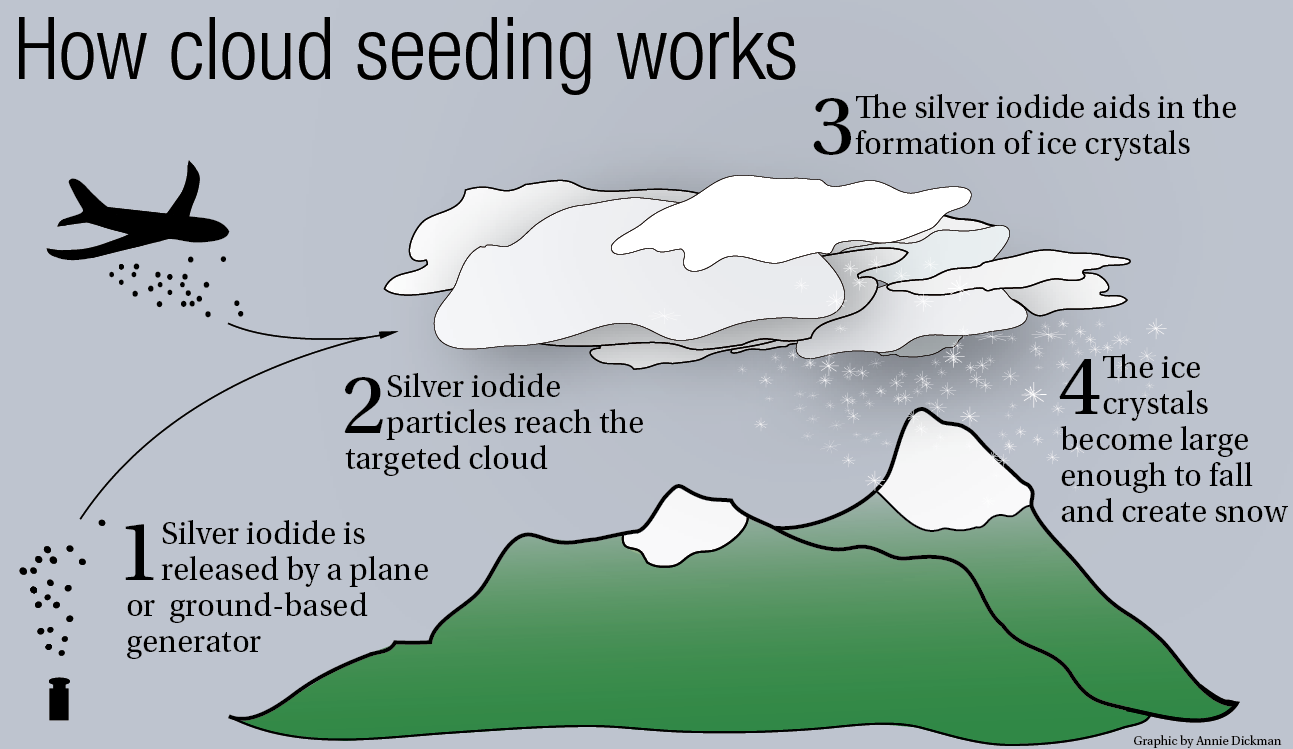Cloud Seeding was suggested by the Chief minister of Delhi Arvind Kejriwal for inducing rain to clear away the smog that has enveloped the Capital since Diwali, but experts are divided on its effectiveness given the timing and usually dry weather of the national capital.
What is cloud seeding?
Cloud Seeding is a process to induce rain in moisture-filled clouds by sprinkling the upper reaches of clouds with chemicals such as common silver iodide or salt, usually with the help of jets fixed to aeroplanes.
It is natural phenomena that rain occurs when moisture content in a cloud becomes too heavy and can no longer be held. Cloud seeding aims to accelerate this process by making more chemical nuclei available to facilitate the process.
The chemicals induce nucleation – the water in the cloud condenses around the newly introduced particles, and then goes to form ice. The much-heavier ice particles then melt on their way to the ground.
For warm clouds – such as those in India – common salt crystals are used and for cold clouds – sodium iodide crystals are used.
After the seeding, rain generally follows 30 minutes. But the process is only meant to increase the precipitation and rainfall is not guaranteed.
It is effective or not:
This technology was first invented in the USA in 1940s but its success rate has been patchy, especially in areas with a warm weather. Several countries, including Australia, France and China, have tried to induce rain with cloud seeding but with various degrees of success.
For example, Australia found that the technology was ineffective in the plains but successful over the island, Tasmania because of increased moisture levels.
China is the most enthusiastic user of the technology. China has pumped in millions of dollars – $150 million a year, by some estimates — into cloud seeding and exports machinery to other countries, including India.
During the 2008 Olympic, Beijing has used the weather modification technology to induce rain, clear away pollution and even inhibit precipitation, when it over seeded clouds to inhibit storms/rainfall and ensured clear skies for sports.
It works in India or not:
The experiments in India with modifying rainfall first started in 1951 over the Western Ghats but saw a spurt in recent years with states such as Maharashtra, Karnataka, and Andhra Pradesh opting for trial runs of the technology.
Maharashtra conducted a cloud seeding run after August in last year to reverse the effects of drought in the state but it was not very effective because most of the moisture-laden clouds had withdrawn by then. This experiments by previous governments in Karnataka had largely failed.
It will work in Delhi or not:
Experts say that cloud seeding works best just before or during the monsoon, which receded from northern India at least two months ago.
The number of moisture-laden clouds decreases as winter approaches and in the absence of these, cloud-seeding is not work. This record do not hold good news for Delhiites.







